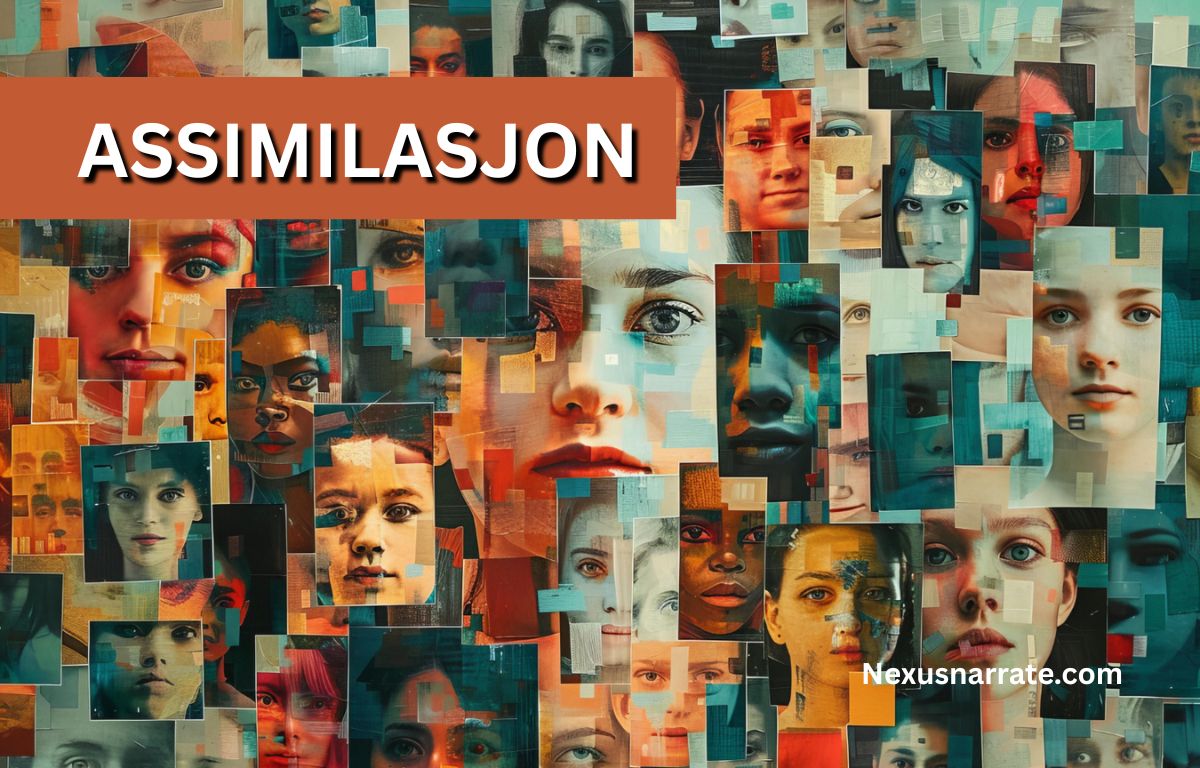Imagine moving to a new country, where the sights and sounds are both thrilling and foreign. You find yourself navigating a world filled with different customs, languages, and traditions. The process of blending into this new culture is known as assimilasjon—a journey that can be both enriching and challenging. This deep dive will explore what assimilasjon truly means, its historical context, and how it affects individuals in today’s globalized society. Join us as we unravel the complexities of cultural integration and discover the intricate dance between diversity and unity.
Understanding Assimilasjon: A Deep Dive into Cultural Integration
Assimilasjon is a powerful concept that reflects the blending of diverse cultures into a cohesive whole. It speaks to the human experience of adapting, learning, and sometimes surrendering aspects of one’s identity in pursuit of belonging.
As our world becomes increasingly interconnected, understanding assimilasjon takes on new significance. Whether through migration or globalization, cultural integration shapes societies and influences how we interact with each other—ultimately fostering both unity and tension among different ways of life.
Also Read: https://nexusnarrate.com/thehrwp/
What Is Assimilasjon? Cultural Meaning, Examples, and Impact Explained
Assimilasjon refers to the process where individuals or groups adopt cultural traits from another group, often leading to a blending of identities. This phenomenon can occur through various means, including migration, education, and social interactions.
Cultural assimilation can manifest in language use, traditions, and even values. Its impact is significant; it can foster unity but also lead to the erosion of distinct cultural identities. The balance between integration and preservation remains a crucial aspect of understanding assimilasjon.
What Does Assimilasjon Mean?
Assimilasjon refers to the process by which individuals or groups adopt the cultural norms of another society. This can include changes in language, customs, and social practices. It often occurs when immigrants or minority groups integrate into a dominant culture.
The term emphasizes blending and adaptation but does not imply complete loss of one’s original identity. Instead, it reflects a dynamic exchange where various elements from different cultures influence each other over time.
Historical Examples of Assimilasjon
Throughout history, assimilasjon has played a vital role in shaping societies. One prominent example is the Native American experience during the 19th century, where policies aimed at integration led to significant cultural loss. Many tribes were forced into reservations and encouraged to adopt Euro-American lifestyles.
Another notable instance occurred with European immigrants in America around the early 20th century. These groups often faced pressure to abandon their native languages and customs for a more “American” identity, illustrating both adaptation and resistance within diverse communities.
Is Assimilasjon Always Good or Bad?
Assimilasjon can evoke mixed feelings. For some, it offers opportunities for growth, acceptance, and a sense of belonging in new communities. Embracing another culture may lead to enriching experiences and broader perspectives.
However, others view assimilasjon as a loss of identity. It may erase important cultural elements and traditions tied to one’s heritage. This tension highlights the complexity of cultural integration, where benefits coexist with potential drawbacks that should not be overlooked.
Assimilasjon in Today’s World
Today, assimilasjon plays a significant role in global society. As people migrate and cultures mix, the blending of traditions and practices becomes inevitable. This integration can foster understanding and cooperation among diverse communities.
However, it also raises concerns about identity loss. Many individuals struggle to balance their heritage with new cultural influences. Navigating this complex landscape requires sensitivity and awareness from both newcomers and established societies alike. The journey is challenging but necessary for fostering unity in diversity.
FAQs About Assimilasjon
Many people wonder how assimilasjon affects identity. It often challenges individuals to balance their original culture with new influences. This can lead to feelings of loss or confusion.
Another common question revolves around whether assimilation is voluntary or forced. While some embrace the process, others may feel pressured by societal expectations. Understanding these nuances helps clarify the complexities surrounding cultural integration and personal experiences within it.
The Journey of Cultures Merging
Cultures are like rivers, flowing and merging over time. When different groups interact, they exchange ideas, beliefs, and customs. This blend can enrich societies but also lead to challenges as identities shift.
Navigating this journey requires openness and empathy. Individuals often grapple with their roots while adapting to new influences. The process shapes communities in profound ways, fostering both unity and tension among diverse populations. Understanding these dynamics is essential for appreciating our shared human experience.
Introduction to Assimilasjon
Assimilasjon refers to the process where individuals or groups adopt the cultural traits of another society. This often occurs when different cultures meet, leading to a blending that can significantly alter identities and practices.
Cultural norms, language, traditions, and values may shift as people embrace new influences. While this integration can foster unity and understanding, it also raises questions about identity preservation in diverse societies. Understanding assimilation helps us appreciate both its complexities and nuances within cultural exchanges.
The Definition and History of Assimilation
Assimilation refers to the process through which individuals or groups adopt the culture of another group, often losing their original identity in the process. This can include language, customs, and social norms. The goal is typically integration into a dominant society.
Historically, assimilation has played a significant role in shaping nations. In many cases, marginalized communities have been compelled to conform to prevailing cultural standards. This dynamic has led to both blending and conflict throughout history as various cultures intersected.
Examples of Cultural Assimilation
Cultural assimilation can be observed in various contexts. For instance, immigrants often adopt the language, customs, and traditions of their new countries. This is evident when families celebrate local holidays alongside their own.
Similarly, indigenous communities may blend aspects of modern culture with traditional practices. An example includes incorporating popular music into regional dance forms while maintaining historical significance. These examples highlight how cultures influence one another over time.
The Positive and Negative Effects of Assimilation
Assimilasjon can foster unity and shared identity among diverse groups. It often leads to increased opportunities, such as better access to education and employment. When individuals adopt a new culture, they may gain social acceptance and reduce discrimination.
On the flip side, assimilation can lead to cultural erasure. Unique traditions and languages might fade away as communities prioritize conformity over diversity. This loss can create feelings of isolation among those who struggle to balance their heritage with new cultural expectations.
Challenges Faced by Those Going Through Assimilation
Assimilation can be an emotional journey. Individuals often grapple with identity loss, feeling caught between their heritage and the new culture they’re entering. This conflict can lead to confusion and anxiety.
Social pressures also play a significant role. Those adapting may face discrimination or alienation from both their original community and the new one. Balancing expectations while maintaining personal beliefs creates a complex landscape for anyone navigating assimilation challenges.
How to Navigate the Journey of Cultures Merging
Navigating the journey of cultures merging requires an open mind. Embrace new experiences while respecting your own heritage. Listening and learning about others fosters understanding.
Building connections is essential. Engage with diverse communities to share stories, traditions, and practices. This exchange enriches everyone involved and creates a sense of belonging in a multicultural environment.
Conclusion
Assimilasjon is a complex and multifaceted process. It involves the blending of cultures, often leading to significant changes in values, behaviors, and identities. While it can foster unity and understanding between different groups, it also poses challenges that individuals must navigate carefully.
Cultural assimilation is not inherently good or bad; its impact depends on various factors like context and individual experiences. As society continues to evolve, recognizing the nuances of assimilasjon will be vital for fostering coexistence while honoring diverse heritages.
Understanding this journey enhances our appreciation of cultural diversity. Embracing change while preserving identity remains an essential aspect of our global community’s growth.







